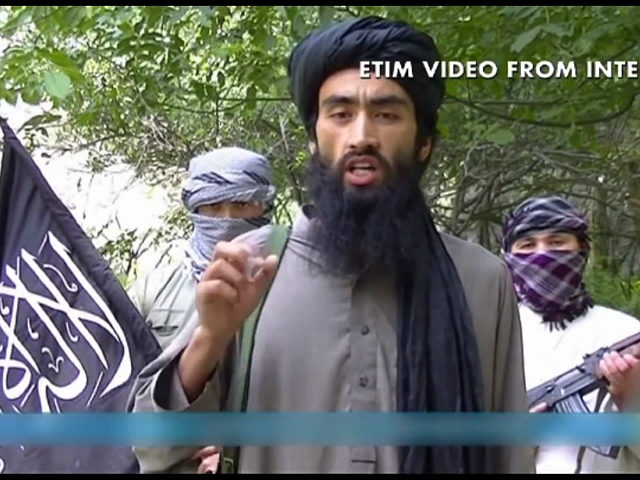American airstrikes targeted training camps along the Afghanistan-China border used by the Taliban and their Chinese Uighur jihadi allies from the East Turkestan Islamic Movement (ETIM).
U.S. Central Command (CENTCOM), charged with American military activity in the Middle East, has made Afghanistan the main effort of its air campaign following the Islamic State (ISIS/ISIL).
“This wasn’t an attack on people. This was an attack on defensive fighting positions [training camps]. And these were defensive fighting positions that we have witnessed the Taliban using, as well as ETIM using,” U.S. Maj. Gen. James B. Hecker, the commander of American and NATO air operations in Afghanistan, told Pentagon reporters, referring to the air campaign.
However, Faqir Mohammad Jowzjani, the police chief of the northern province of Jowzjan, told the Associated Press (AP). the strikes killed an ETIM fighter and three Uzbek militants were killed in the joint U.S. and Afghan airstrikes.
Gen. Hecker told reporters on Wednesday:
Over the past weekend, United States forces conducted air operations to strike Taliban and East Turkestan Islamic Movement, or ETIM, training facilities in [the Afghan] Badakhshan province [along China’s border].
The destruction of these training facilities prevents terrorists from planning any acts near the border with China and Tajikistan. The strikes also destroyed stolen Afghan National Army vehicles in the process of being converted to vehicle-borne improvised explosive devices.
Gen. Hecker noted that ETIM Chinese Uighur (or Uyghur) terrorists operate in China and the along the international boundary the Asian giant shares with Afghanistan, particularly in the province of Badakhshan.
China’s Muslim Uighur-majority Xinjiang, the largest province in the country, borders Afghanistan and Pakistan-occupied Kashmir, a Muslim-majority region claimed by Beijing, Islamabad, and their rival New Delhi.
China faces a terrorist threat stemming from within Pakistan and to a lesser extent Afghanistan, according to a commission convened by the U.S. government. Uighur terrorists have long been training in the Afghanistan-Pakistan region, home to the largest concentration of U.S.-designated terrorist groups in the world.
The U.S. commander explained:
ETIM enjoys support from the Taliban in the mountains of [northern Afghanistan’s] Badakhshan, so hitting these Taliban training facilities and squeezing the Taliban’s support networks degrades ETIM capabilities … We didn’t actually strike ETIM terrorists when we were doing this. We were strictly striking the training camps that both the Taliban as well as the ETIM use.
Hecker described the training facilities as “defensive fighting positions” that needed to be taken out.
On Twitter, U.S. Forces-Afghanistan (USFOR-A) acknowledged that the February 4 air offensive involved two American Air Force B-52s, including one that dropped the most bombs such an aircraft has ever launched — 24.
The U.S. has officially deemed ETIM a foreign terrorist organization.
“We believe increasing the Afghan air capability will be one of the most significant keys to expanding its control over the population in the next two years,” noted Gen. Hecker.
The Taliban does not yet possess air campaign capabilities besides being able to try to take out warplanes or other aircraft from the ground.
However, Russia, Iran, and Pakistan are reportedly helping the Taliban expanse its military capabilities, arguing that they are doing to help the group take on ISIS.
Currently, the Taliban’s strength and influence have reached unprecedented levels — an estimated 60,000 of the group’s jihadists control or contest about 45 percent of Afghanistan.
Nevertheless, U.S. officials told a Senate panel that Trump’s recently unveiled Afghan strategy is beginning to bear fruit, reversing the terrorist group’s momentum that flourished soon after former President Barack Obama ended the American combat mission at the end of 2014 and withdrew the majority of American troops.
“Despite recent setbacks stemming from horrific and senseless acts of violence, the President’s South Asia strategy is showing some signs of progress,” John Sullivan, the Deputy Secretary of State, told lawmakers on Tuesday. “On the battlefield, we are seeing the Taliban’s momentum begin to slow.”
However, Randall Schriver, a top Pentagon official, acknowledged that the United States is “clearly not where we want to be,” noting that there have been “Taliban gains” in rural areas in Afghanistan.

COMMENTS
Please let us know if you're having issues with commenting.